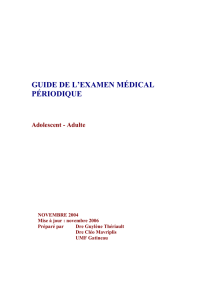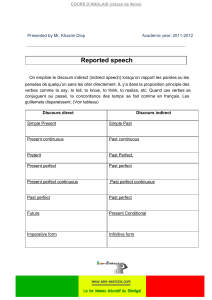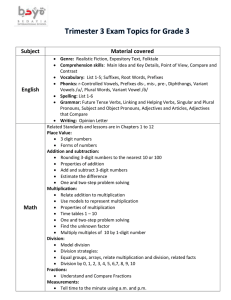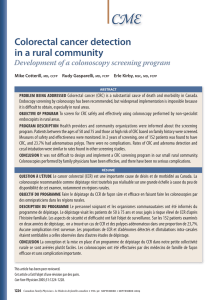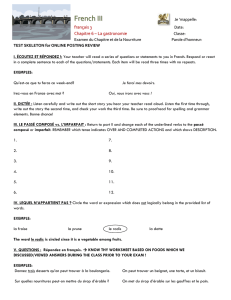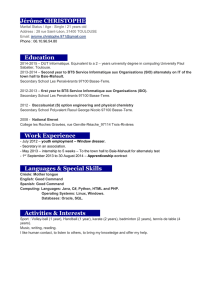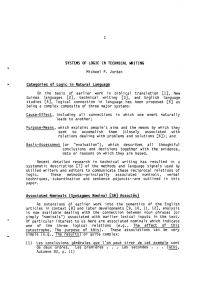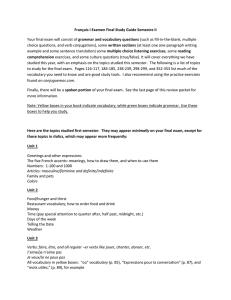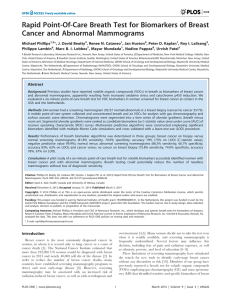70 ans
publicité
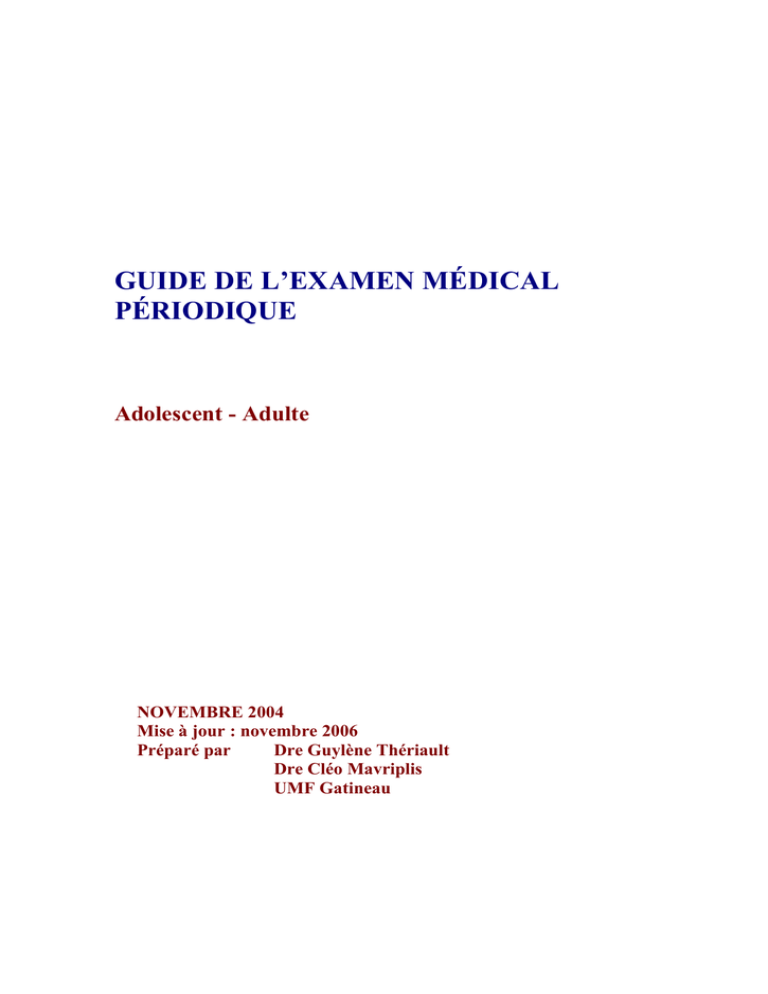
GUIDE DE L’EXAMEN MÉDICAL PÉRIODIQUE Adolescent - Adulte NOVEMBRE 2004 Mise à jour : novembre 2006 Préparé par Dre Guylène Thériault Dre Cléo Mavriplis UMF Gatineau Recommandations Maladies métaboliques et nutritionnelles Glycémie (dépistage du diabète) Cholestérol Tension artérielle Ostéoporose TSH Hemochromatose Cancers Sein Côlon (recherche de sang dans les selles) Col utérin Prostate Testicules Poumon Vessie Ovaires Pancréas Oral Peau Thyroide Maladies infectieuses Chlamydia Gonorrhée Rubéole HIV Syphilis Tuberculose Bactériurie Hepatites Herpes Human papilloma virus Habitudes de vie Tabac Alcool Diète Obésité Activité physique Troubles de la vision ou de l’audition Vision Glaucome Surdité Santé mentale Drogues Dépression Démence Santé de la femme Contraception Acide folique préconception Chimioprophylaxie pour le cancer du sein Hormonothérapie Prévention des accidents MCAS Aspirine (prévention primaire) Dépistage Vitamine E Maladies vasculaires Anévrysme de l’aorte abdominale Sténose carotidienne MVAS Annexe 1 Annexe 2 Annexe 3 Annexe 4 Annexe 5 Feuilles synthèse des recommandation par sexe et groupe d’âge Suggestions de feuilles de prise de données pour l’examen périodique adulte Feuilles sommaires Critères pour les recommandations des différents groupes SCORE, ORAI Pour chaque thème il y a la recommandation du Groupe d’étude canadien sur les soins de santé préventifs et/ou celle de son équivalent américain. Les recommandations de groupes de travail ou d’associations qui semblaient pertinentes ont aussi été retranscrites. Pour assurer la fiabilité de la retranscription la langue d’origine a été conservée L’immunisation n’a pas été abordé. Le PIQ étant selon moi une excellente référence (souvent mise à jour et fiable) Les problématiques liées à la grossesse ou aux problèmes dentaires ne sont pas couvertes Remerciements à Dr Gilles Brousseau pour les feuilles sommaires Dre Guylaine Proulx, Dre Marie-Claude Dupras, Dre Helène Bureau et Dre Louise Guay pour leurs commentaires Patricia Rhéaume, Irène Veilleux et Pierre Lebrun pour leur support technique GLYCÉMIE (dépistage du diabète) CANADA 1) CTFPHC 2005: There is fair evidence to recommend screening adults with hypertension or hyperlipidemia for type 2 diabetes mellitus to prevent cardiovascular events and death (Recommandation B) There is good evidence to recommend lifedtyle interventions for overweight individuals (BMI>25 or >22 if on asian descent) with impaired glucose tolerance to reduce the incidence of progression to diabetes (Recommandation B) There is fair evidence to recommend acarbose treatment for overweight individuals (as above) with impaired glucose tolerance to prevent cardiovascular events and hypertension (Recommandation B) There is insufficient evidence to recommend metformin or acarbose treatment for overweight individuals with impaired glucose tolerance to prevent diabetes progression (Recommandation I) 1993 : Good evidence to include dipstick screening for protein in the PHE of adults with IDDM. (Recommandation A) 2) Association canadienne du diabète 2003 Le dépistage du diabète au moyen de l’épreuve de glycémie à jeun doit être fait tous les 3 ans chez les personnes de 40 ans et plus (Catégorie D, consensus). Des mesures de la glycémie à jeun ou de la glycémie 2 heures après l’ingestion de 75 g de glucose doivent être effectuées plus fréquemment et/ou plus tôt chez les personnes qui présentent des facteurs de risque additionnels de diabète (Catégorie D, consensus ). ETATS-UNIS 1) USPSTF 2003 The USPSTF concludes that the evidence is insufficient to recommend for or against routinely screening asymptomatic adults for type 2 diabetes, impaired glucose tolerance, or impaired fasting glucose. (Recommandation I) The USPSTF recommends screening for type 2 diabetes in adults with hypertension or hyperlipidemia. (Recommandation B) 2) American diabetes association 2006 Screening to detect pre-diabetes (IFG or IGT) and diabetes should be considered in individuals ≥ 45 years of age, particularly in those with a BMI ≥25 kg/m2. Screening should also be considered for people who are <45 years of age and are overweight if they have another risk factor for diabetes (• are habitually physically inactive • have a first-degree relative with diabetes • are members of a high-risk ethnic population (e.g., African American, Latino, Native American, Asian American, Pacific Islander) • have delivered a baby weighing >9 lb or have been diagnosed with GDM • are hypertensive (140/90 mmHg) • have an HDL cholesterol level <35 mg/dl (0.90 mmol/l) and/or a triglyceride level >250 mg/dl (2.82 mmol/l) • have PCOS • on previous testing, had IGT or IFG • have other clinical conditions associated with insulin resistance (e.g. PCOS or acanthosis nigricans) • have a history of vascular disease) should be carried out at 3-year intervals. Repeat testing CHOLESTÉROL CANADA 1) CTFPHC 1994 Screening should be considered in all men aged 30 to 59 years; individual clinical judgement should be exercised in all other cases (Recommandation C) For men 30 to 59 years old with a mean total cholesterol level of more than 6.85 mmol/L or an LDL-C level of more than 4.50 mmol/L treatment is efficacious in reducing incidence of CHD. (Recommandation B) For all other asymptomatic individuals the value of treatment has not been demonstrated. (Recommandation C) Révision en cours? 2) The working group on hypercholesterolemia and other dyslipidemias (Canada) 2003: Routinely screen men over 40 years of age and women who are postmenopausal or over 50 years of age. In addition screen those with: diabetes mellitus, risk factors such as hypertension, smoking or abdominal obesity; a strong family history of premature cardiovascular disease; manifestation of hyperlipidemia or evidence of symptomatic or asymptomatic atherosclerosis 2000 : Although there are no evidence-based recommendations regarding the optimal frequency for screening, it is reasonable to suggest that asymptomatic patients be screened every 5 years after the age of 40 for men and 50 for women 3) Association canadienne du diabete 2006 In adults, fasting lipids levels should be measured at the time of diagnosis of diabetes and then every 1 to 3 years as clinically indicated. ETATS-UNIS 1) USPSTF 2001 The U.S. Preventive Services Task Force (USPSTF) strongly recommends that clinicians routinely screen men aged 35 years and older and women aged 45 years and older for lipid disorders and treat abnormal lipids in people who are at increased risk of coronary heart disease. (Recommendation A) AAFP has same recommandation (strongly recommands) The USPSTF recommends that clinicians routinely screen younger adults (men aged 20 to 35 and women aged 20 to 45) for lipid disorders if they have other risk factors for coronary heart disease (Recommandation B) (Diabetes., A family history of cardiovascular disease before age 50 years in male relatives or age 60 years in female relatives, A family history suggestive of familial hyper-lipidemia. Multiple coronary heart disease risk factors (e.g., tobacco use, hypertension). The optimal interval for screening is uncertain. On the basis of other guidelines and expert opinion, reasonable options include every 5 years, shorter intervals for people who have lipid levels close to those warranting therapy, and longer intervals for low-risk people who have had low or repeatedly normal lipid levels An age to stop screening is not established. Screening may be appropriate in older people who have never been screened, but repeated screening is less important in older people because lipid levels are less likely to increase after age 65 years 2) NCEPP III 2001 NCEPP: National cholesterol education program (USA) In all adults aged 20 years or older, a fasting lipoprotein profile should be obtained once every five years. (rien de nouveau sur dépistage dans update 2004)The American Heart Association has the same recommandation 3) AACE 2002 American association of clinical endocrinologists Screening for dyslipidemia is warranted for all adults up to 75 years of age regardless of CAD risk status and for adults more than 75 years old who have multiple CAD risk factors (if they have good quality of life and no other major life-limiting disease). For adult more than 20 years of age with no CAD risk factors the screening should be done every 5 years. (more often if CAD risk factors exist) TENSION ARTÉRIELLE CANADA 1) CTFPHC 1994 Measurement of blood pressure (BP) level. Although not evaluated for its effectiveness, casefinding should be considered in all persons aged 21 to 64 years; Fair evidence to include in periodic health examination . (Recommandation B) Hypertension in the elderly: Screening for this condition can be confidently recommanded in those aged 65 to 84 years.(Recommandation B) Efficacy in treatment in treatment has not been demonstrated in those above 80. While definitive evidence for treatment of hypertension in those over 85 is lacking, it seems unlikely that judicious treatment will be detrimental 2) Canadian hypertension society 2006 Mesurer la pression artérielle de tous les adultes à toutes les visites appropriées ETATS-UNIS 1) USPSTF 2003 The U.S. Preventive Services Task Force (USPSTF) strongly recommends that clinicians screen adults aged 18 and older for high blood pressure. (Recommandation A) Evidence is lacking to recommend an optimal interval for screening adults for high blood pressure Measurement of blood pressure during office visits is also recommanded for adolescents (Recommandation B) 2) JNC VII (Joint national committee on prevention, detection, evaluation and treatment of high blood pressure) 2003: Annual screening of adults starting at 18 years of age. If BP is < 130/85 then every 2 years. If BP is 130-139/ 85-89 check annually. If BP 140-149/ 90-99 confirm within 2 months. OSTÉOPOROSE CANADA 1) CTFPHC 2004 Screening all postmenopausal women with a history of previous fracture, or who are 65 years or older, or have a ORAI score of 9 or a SCORE score of 6 with BMD by DEXA to prevent fragility fractures. (Recommandation B).For women without documented osteoporosis, there is fair evidence that calcium and vitamin D supplementation alone prevents osteoporotic fractures (Recommandation B) 2) Osteoporosis society of Canada 2002 Screening of all postmenopausal women or all men over age 50 is not justified according to available data. However, measuring bone density in men and women after the age of 65, recognizing that after this age fracture risk increases, is justifiable (level 3). Evidence for the use of bone measurement in men and in non-Caucasian women is meager. Existing data do not contradict the inferences already made (consensus). Targeted case-finding strategies for those at increased risk (at least one major or 2 minor risk factors) are recommended, and BMD measurement with central DXA at age 65 is recommended (Grade A). Daily intake of calcium : Femme 19-50 ans 1000mg/jr (Grade A) Femme >50 ans 1500 mg/jr (Grade A) Homme 19-50 ans 1000 mg/jr (Grade C) Homme >50 ans 1500 mg/jr (Grade C) Daily intake of vitamin D : Femme 19-50 ans 400UI (Grade D) Femme >50 ans 800UI (Grade A) Homme 19-50 ans 400UI (Grade D) Homme >50 ans 800UI (Grade A) Eviter >4 tasses café/jr (Grade B) ETATS-UNIS 1) USPSTF 2002 The U.S. Preventive Services Task Force (USPSTF) recommends that women aged 65 and older be screened routinely for osteoporosis. The USPSTF recommends that routine screening begin at age 60 for women at increased risk for osteoporotic fractures (Recommandation B) (Lower body weight (weight < 70 kg ) is the single best predictor of low bone mineral density.There is less evidence to support the use of other individual risk factors (for example, smoking, weight loss, family history, decreased physical activity, alcohol or caffeine use, or low calcium and vitamin D intake) as a basis for identifying high-risk women younger than 65 . The best validated instruments include the 3-item ORAI and the 6-item Simple Calculated Osteoporosis Risk Estimation tool (SCORE)) (voir annexe de la version papier ou SCORE http://www.geocities.com/HotSprings/8741/score2.html et ORAI http://www.cmaj.ca/cgi/content/full/162/9/1289/T414 ) The USPSTF makes no recommendation for or against routine osteoporosis screening in postmenopausal women who are younger than 60 or in women aged 60-64 who are not at increased risk for osteoporotic fractures (Recommandation C) No studies have evaluated the optimal intervals for repeated screening. Because of limitations in the precision of testing, a minimum of 2 years may be needed to reliably measure a change in bone mineral density; however, longer intervals may be adequate for repeated screening to identify new cases of osteoporosis. Yield of repeated screening will be higher in older women, those with lower BMD at baseline, and those with other risk factors for fracture There are no data to determine the appropriate age to stop screening and few data on osteoporosis treatment in women older than 85 2) National osteoporosis foundation 1999 Counsel all women on the risk of osteoporosis and related fractures. Advise all patients to consume adequate amounts of calcium (at least 1220 mg/day, including supplements if necessary) and vitamin D (400 to 800 IU per day for individuals at risk of deficiency). Recommand regular weight bearing and muscle strengthening exercice. Avoid tobacco smoking and excessive alcool intake. Recommand BMD testing to all women 65 and older, to younger postmenopausal women who have one or more risk factors (other than being white, postmenopausal and female*), and to postmenopausal women who have suffered afragility fracture. ( *history of a fragility fracture in a first degree relative, low body weight less than 127 pounds, current smoking, use of oral corticosteroid therapy for more than 3 months) TSH CANADA CTFPHC 1994 Poor evidence for either inclusion or exclusion of TSH screening (Recommandation C); due to the high prevalence of thyroid disorders in peri-menopausal women, physicians should maintain a high index of clinical suspicion. ETATS-UNIS USPSTF 2004 The USPSTF concludes the evidence is insufficient to recommend for or against routine screening for thyroid disease in adults (Recommandation I) HEMOCHROMATOSIS ETATS-UNIS USPSTF 2006 The U.S. Preventive Services Task Force (USPSTF) recommends against routine genetic screening for hereditary hemochromatosis in the asymptomatic general population. (Recommandation D) CANCER DU SEIN CANADA 1)CTFPHC 1998:There is good evidence for screening women aged 50-69 years by clinical examination and mammography (Recommandation A). The best available data support screening every 1-2 years. 2001: Current evidence does not support the recommendation that screening mammography be included in or excluded from the periodic health examination of women aged 40-49 at average risk of breast cancer (Recommandation C) Upon reaching the age of 40, Canadian women should be informed of the potential benefits and risks of screening mammography and assisting in deciding at what age they wish to initiate it. Comparison of RCT results suggests that, if done, frequent screening may be required (Mammography every 12-18 months) 2001: Because there is fair evidence of no benefit, and good evidence of harm, there is fair evidence to recommend that routine teaching of BSE be excluded from the periodic health examination of women aged 40–69 (Recommandation D) 2) Société canadienne du cancer Si vous êtes âgée de 50 à 69 ans, passez une mammographie tous les 2 ans. Si vous avez entre 40 et 49 ans, discutez avec votre médecin de votre risque personnel de cancer du sein ainsi que des avantages et inconvénients de la mammographie. Si vous avez 70 ans ou plus, demandez à votre médecin ce qu’il vous conseille en matière de dépistage. Si vous avez plus de 40 ans, passez un examen clinique des seins, effectué par un professionnel de la santé compétent, au moins une fois tous les 2 ans. Songez également à pratiquer l’auto-examen des seins et signalez tout changement à votre médecin ETATS-UNIS 1)USPSTF 2005 The USPSTF recommends that women whose family history is associated with an increased risk for deleterious mutations in BRCA1 or BRCA2 genes be referred for genetic counseling and evaluation for BRCA testing (Recommandation B) For non-Ashkenazi Jewish women, these patterns include 2 first-degree relatives with breast cancer, 1 of whom received the diagnosis at age 50 years or younger; a combination of 3 or more first- or second-degree relatives with breast cancer regardless of age at diagnosis; a combination of both breast and ovarian cancer among first- and second-degree relatives; a first-degree relative with bilateral breast cancer; a combination of 2 or more first- or second-degree relatives with ovarian cancer regardless of age at diagnosis; a firstor second-degree relative with both breast and ovarian cancer at any age; and a history of breast cancer in a male relative. For women of Ashkenazi Jewish heritage, an increased-risk family history includes any first-degree relative (or 2 second-degree relatives on the same side of the family) with breast or ovarian cancer. 2)USPSTF 2002 U.S. Preventive Services Task Force (USPSTF) recommends screening mammography, with or without clinical breast examination (CBE), every 1-2 years for women aged 40 and older. (Recommandation B) The National Cancer Institute has basically the same recommandation on their Web site. Women who are at increased risk for breast cancer (e.g., those with a family history of breast cancer in a mother or sister, a previous breast biopsy revealing atypical hyperplasia, or first childbirth after age 30 are more likely to benefit from regular mammography than women at lower risk. The recommendation for women to begin routine screening in their 40s is strengthened by a family history of breast cancer having been diagnosed before menopause The USPSTF did not find sufficient evidence to specify the optimal screening interval for women aged 40-49. The USPSTF concluded that the evidence is also generalizable to women aged 70 and older if their life expectancy is not compromised by comorbid disease. The USPSTF concludes that the evidence is insufficient to recommend for or against teaching or performing routine breast self-examination (BSE). (Recommandation I) The 3) ACOG 2003 The following recommandations are based on limited and inconsistent scientific evidence (Level B) : Women aged 40-49 years should have screening mammography every 1-2 years. Women aged 50 years and older should have annual mammography. The following recommandations are based primarly on consensus and expert opinion (level C) : Despite a lack of definitive data for or against breast self examination, breast self examination has the potential to detect palpable breast cancer and can be recommanded. All women should have clinical breast examination annually as part of the physical examination 4) ACPM 1996 (American college of preventive medicine) There is inadequate evidence for or against mammography screening of women under age 50. Women between ages 50 and 69 should have annual or biennial mammography. Women aged 70 or older should continue undergoing mammography screening provided their health status permits breast cancer treatment . 5) American geriatrics society 2005 For women in average to better health, with a life expectancy of 5 or more years, it is appropriate to offer screening mammography every one to two years to age 85. The recommandation should include an individualized review of the potential benefits and harms of screening and patients personnal preferences. Mammography screening beyond the age of 85 should be reserve for those women more likely to benefit by virtue of execellent health and fonctionnal status, and for those who feel strongly that they will benefit from such screening, either in peace of mind or improved quality of life. Clinical breat examination should be performed periodically. CANCER DU SEIN (suite) COCHRANE 2006 Screening likely reduces breast cancer mortality. Based on all trials, the reduction is 20%, but as the effect is lower in the highest quality trials, a more reasonable estimate is a 15% relative risk reduction. Based on the risk level of women in these trials, the absolute risk reduction was 0.05%. Screening also leads to overdiagnosis and overtreatment, with an estimated 30% increase, or an absolute risk increase of 0.5%. This means that for every 2000 women invited for screening throughout 10 years, one will have her life prolonged. In addition, 10 healthy women, who would not have been diagnosed if there had not been screening, will be diagnosed as breast cancer patients and will be treated unnecessarily. It is thus not clear whether screening does more good than harm. Women invited to screening should be fully informed of both benefits and harms . CANCER DU CÔLON (Recherche de sang occulte dans les selles) CANADA 1) CTFPHC 2001 Good evidence to include screening with annual or biennial Hemoccult test in the periodic health examination (PHE) of patients >50 (Recommandation A) 2) Canadian association of gastroenterologists 2004 Average risk: FOBT every two years. The AGA guidelines recommand screening yearly using a guaiac-test with dietary restrictions or a immunochemical test for heme without restrictions. The Canadian expert panel commissioned by Health Canada recommanded occult blood testing every two years. Although yearly occult blood testing does increase the detection of cancer, it was not felt that this justified the resulting considerable increase in work load Above average risk: 1) One first degree relative with cancer or adenomatous polyp at age < 60 or two or more first degree relatives with polyp or colon cancer at any age: colonoscopy every five years. Begin at age 40 or ten years earlier than the youngest diagnosis of polyp or cancer in the family which ever comes first. 2) One first degree relative with cancer or adenomatous polyp affected at age >60 or two or more second degree relatives with polyps or cancer : average risk screening but begin at age forty 3) National committee on colorectal cancer sreening (Health Canada 2002) Screening should be offered to adults 50-74 years old using FOBT. Individuals should be screened at least every two years recognising that annual screening would have slight improvement in mortality reduction but require increased resources ETATS-UNIS 1) USPSTF 2002 The USPSTF strongly recommends that clinicians screen men and women 50 years of age or older for colorectal cancer. (Recommandation A) The USPSTF found good evidence that periodic fecal occult blood testing (FOBT) reduces mortality from colorectal cancer 2) American Gastroenterological Association 2003 Men and women at average risk should be offered screening beginning at age 50 years Offer yearly screening with fecal occult blood test (FOBT) using a guaiac-based test with dietary restriction or an immunochemical test without dietary restriction. Two samples from each of 3 consecutive stools should be examined without rehydration. Patients with a positive test on any specimen should be followed up with colonoscopy. People with a first-degree relative (parent, sibling, or child) with colon cancer or adenomatous polyps diagnosed at age <60 years or 2 first degree relatives diagnosed with colorectal cancer at any age should be advised to have screening colonoscopy starting at age 40 years or 10 years younger than the earliest diagnosis in their family, which ever comes first, and repeated every 5 years People with a first degree relativewith colon cancer or adenomatous polyp diagnosed at age ≥ 60 years or two second degree relatives with colorectal cancer should be advised to be screened as average risk persons, but beginning at age 40 years. People with one second degree relative or third degree relative with colorectal cancer should be advised to be screened as average risk persons COCHRANE 1998 Screening benefits include reduction in colorectal cancer mortality, possible reduction in cancer incidence through detection and removal of colorectal adenomas and potentially, treatment of early colorectal cancers may involve less invasive surgery. Harmful effects of screening include the physical complications of colonoscopy, disruption to lifestyle, stress and discomfort of testing and investigations, and the anxiety caused by falsely positive screening tests. Although screening benefits are likely to outweigh harms for populations at increased risk of colorectal cancer, we need more information about the harmful effects of screening, the community's responses to screening and screening costs for different health care systems before widespread screening can be recommended. CANCER DU COL UTÉRIN CANADA CTFPHC 1992 Pap: Fair evidence to include in periodic health examination of sexually active women. (Recommandation B) Annual screening is recommended following initiation of sexual activity or age 18; after 2 normal smears, screen every 3 years to age 69. Consider increasing frequency for women with risk factors: age of first sexual intercourse < 18 yrs, many sexual partners or consort with many partners, smoking or low socioeconomic status . ETATS-UNIS 1) USPSTF 2003 The USPSTF strongly recommends screening for cervical cancer in women who have been sexually active and have a cervix. (Recommandation A) Indirect evidence suggests most of the benefit can be obtained by beginning screening within 3 years of onset of sexual activity or age 21 (which ever comes first) and screening at least every 3 years. The USPSTF found no direct evidence that annual screening achieves better outcomes than screening every 3 years. The American Cancer Society guidelines suggest waiting until age 30 before lengthening the screening interval Although there is little value in screening women who have never been sexually active, many U.S. organizations recommend routine screening by age 18 or 21 for all women, based on the generally high prevalence of sexual activity by that age in the U.S. and concerns that clinicians may not always obtain accurate sexual histories The USPSTF recommends against routinely screening women older than age 65 for cervical cancer if they have had adequate recent screening with normal Pap smears and are not otherwise at high risk for cervical cancer (Recommandation D). The USPSTF recommends against routine Pap smear screening in women who have had a total hysterectomy for benign disease. (Recommandation D) The USPSTF concludes that the evidence is insufficient to recommend for or against the routine use of new technologies to screen for cervical cancer. (Recommandation I) Newer Food and Drug Administration (FDA)-approved technologies, such as the liquidbased cytology (e.g., ThinPrep®), may have improved sensitivity over conventional Pap smear screening, but at a considerably higher cost and possibly with lower specificity 2) ACOG 2003 First Screen Women Up to Age 30 Women Age 30 and Older About three years after first Annual cervical Three screening options: sexual intercourse or by age 21, cytology testing. 1. Women who have had three negative results on which ever comes first. annual Pap tests can be rescreened with cytology alone every two to three years. 2. Annual cervical cytology testing. 3. Cytology with the addition of an HPV-DNA test. If both the cervical cytology and the DNA tests are negative, rescreening should occur no sooner than three years. Women of any age who are immunocompromised, are infected with HIV, or were exposed in utero to DES, have an history of CIN 2 ou 3 should be screened annually. Women who have undergone removal of the cervix for benign indications and have no prior history of CIN 2 ou 3 or worse may discontinue routine cytology testing. A women with a history of CIN 2 ou 3 should be monitored annually until at least 3 consecutive negative cytology results are documented Evidence is inconclusive to establish an upper age limit for cervical cancer screening. If screening is discontinued, risk factors should be assessed during the annual examination to determine if reinitiating screening is appropriate 3)American geriatrics society 2000 Regular pap smear screening at 1 to 3 year intervals until at least the age of 70 seems reasonable. Beyond age 70, there is little evidence for or against screening women who have been regularly screened in previous years. An older woman of any age who has never had a pap smear may be screened with at least two negative pap smears 1 year apart. CANCER DE LA PROSTATE CANADA 1) CTFPHC 1994 Digital Rectal Examination (DRE) : Poor evidence to include or exclude DRE from the periodic health examination (PHE) for men over 50 years of age (Recommandation C) Prostate specific antigen (PSA) : Exclusion is recommended on the basis of low positive predictive value and the known risk of adverse affects associated with therapies of unproven effectiveness. Fair evidence to exclude routine screening with PSA from the periodic health examination of asymptomatic men over 50 years of age. (Recommandation D) 2) Canadian urological association 1996 The digital rectal examination (DRE) and prostate specific antigen (PSA) measurements increase the early detection of clinically significant prostate cancer. Men should be made aware of the potential benefits and risks of early detection so that they can make an informed decision as to whether to have this test performed. 3) College des medecins du Quebec Il n’est pas recommandé d’utiliser systématiquement le dosage de l’APS et/ou le toucher rectal seuls ou combinés comme méthode de dépistage du cancer de la prostate, quel que soit l’âge du patient (catégorie D) Le patient qui manifeste un intérêt ou des craintes relativement au cancer de la prostate devrait rcevoir du counselling pour lui permettre de faire un choix éclairé. De fait, une incertitude persiste quant aux avantages et aux inconvénients de dépistage chez les individus appartenant à l’un des groupes suivants ▪ les hommes agés de 50à 69 ans et jouissant d’une espérance de vie supérieur à 10 ans ▪ les hommes agés de 40 ans et plus d’origine afro-américaine ou les hommes de 40 ans et plus dont au moins un parent de premier degré a souffert d’un cancer de la prostate et qui jouissent d’une espérance de vie supérieure à 10 ans. Cependant les données actuelles ne permettent pas d’affirmer que le dépisatge est plus efficace dans de telles circonsatnces (catégorie C) ETATS-UNIS 1) USPSTF 2002 The U.S. Preventive Services Task Force (USPSTF) concludes that the evidence is insufficient to recommend for or against routine screening for prostate cancer using prostate specific antigen (PSA) testing or digital rectal examination (DRE) (Recommandation I) AAFP has the same recommandation *(The USPSTF found good evidence that PSA screening can detect early-stage prostate cancer but mixed and inconclusive evidence that early detection improves health outcomes. Screening is associated with important harms, including frequent false-positive results and unnecessary anxiety, biopsies, and potential complications of treatment of some cancers that may never have affected a patient's health. The USPSTF concludes that evidence is insufficient to determine whether the benefits outweigh the harms for a screened population.) 2) American urological association 2006 The American Urological Association endorses the American Cancer Society’s policy as follows: "Both prostate specific antigen and digital rectal examination should be offered annually, beginning at age 50 years, to men who have at least a 10 year life expectancy, and to younger men who are at high risk. Information should be provided to patients regarding potential risks and benefits of intervention. Men who choose to undergo screening should begin at age 50 years. However, men in high risk groups such as those with a strong family predisposition (e.g., two or more affected first degree relatives) or African Americans may begin at a younger age (e.g., 45 years). CANCER DE LA PROSTATE (suite) Cochrane 2006 Given that only two randomised controlled trials were included, and the high risk of bias of both trials, there is insufficient evidence to either support or refute the routine use of mass, selective or opportunistic screening compared to no screening for reducing prostate cancer mortality. Currently, no robust evidence from randomised controlled trials is available regarding the impact of screening on quality of life, harms of screening, or its economic value. Results from two ongoing large scale multicentre randomised controlled trials that will be available in the next several years are required to make evidence-based decisions regarding prostate cancer screening. CANCER DES TESTICULES CANADA CTFPHC 1994 Insufficient evidence to include or exclude routine examination of testes either by physician or by patient self-examination from the periodic examination. (Recommandation C) ETATS-UNIS USPSTF 2004 The U.S. Preventive Services Task Force (USPSTF) recommends against routine screening for testicular cancer in asymptomatic adolescent and adult males. (Recommandation D) CANCER DU POUMON CANADA CTFPH 2003 The CTFPHC concludes that there still is fair evidence to recommend against screening with chest X-ray asymptomatic people for lung cancer using chest radiographic examination (Recommandation D). The CTF concludes that there is insufficient evidence (in quantity and/or quality) to make a recommendation as to whether spiral CT scanning should be used for screening asymptomatic people for lung cancer; however other factors may influence decision-making (Recommandation I ). ETATS-UNIS USPSTF 2004 The U.S. Preventive Services Task Force (USPSTF) concludes that the evidence is insufficient to recommend for or against screening asymptomatic persons for lung cancer with either low dose computerized tomography (LDCT), chest x-ray (CXR), sputum cytology, or a combination of these tests. (Recommandation I) The USPSTF found fair evidence that screening with LDCT, CXR, or sputum cytology can detect lung cancer at an earlier stage than lung cancer would be detected in an unscreened population; however, the USPSTF found poor evidence that any screening strategy for lung cancer decreases mortality. Because of the invasive nature of diagnostic testing and the possibility of a high number of false-positive tests in certain populations, there is potential for significant harms from screening. Therefore, the USPSTF could not determine the balance between the benefits and harms of screening for lung cancer. Cochrane 2003 The current evidence does not support screening for lung cancer with chest radiography or sputum cytology. Frequent chest x-ray screening might be harmful. Further, methodologically rigorous trials are required. AUTRES CANCERS Vessie CTFPHC 1993 Urine dipstick or microscopy for hematuria : Fair evidence to exclude from Periodic Health Examination (PHE) for general population (Recommandation D); poor evidence to include or exclude from the PHE for persons at high risk.* (Recommandation C ) (* High-risk groups are Males > 60 years of age who smoke or have smoked, and were employed in a trade that may have exposed them to aromatic amines. ) USPSTF 2004 The U.S. Preventive Services Task Force (USPSTF) recommends against routine screening for bladder cancer in adults. (Recommandation D) Ovaires CTFPHC 1994 Fair evidence to exclude screening for ovarian cancer by any means (ultrasound, pelvic exam, serum markers) for pre- and post-menopausal women. (Recommandation D) For High-Risk Women with >1 First-degree Relative with Ovarian Cancer : Insufficient evidence to recommend for or against screening. (Recommandation C) USPSTF 2004 The U.S. Preventive Services Task Force (USPSTF) recommends against routine screening for ovarian cancer.(Recommandation D) Pancréas CTFPHC 1994 There is fair evidence that routine screening should be excluded from the periodic health examination. (Recommandation D) USPSTF 2004 The U.S. Preventive Services Task Force (USPSTF) recommends against routine screening for pancreatic cancer in asymptomatic adults using abdominal palpation, ultrasonography, or serologic markers. (Recommandation D) Oral CTFPHC 1999 Insufficient insufficient evidence to recommend inclusion or exclusion of screening for oral cancer by clinical examination of asymptomatic patients (Recommandation C) For high risk patients, annual examination by physician or dentist should be considered. Major risk factors include a history of tobacco use and excessive alcohol consumption USPSTF 2004 the evidence is insufficient to recommend for or against routinely screening adults for oral cancer. (Recommandation I) AUTRES CANCERS (suite) Peau CTFPHC 1994 Total body skin examination : There is poor evidence to include or exclude from the periodic health examination (PHE) of the general population (Recommandation C ); there is fair evidence for the inclusion of total body skin examination for a very select sub-group of individuals. (Recommandation B) (For individuals at significantly increased risk (i.e. family melanoma syndrome (MM) first degree relative with melanoma) it is prudent to undertake regular examinations (dermatologists may be more accurate assessors).) Self-Exam : There is poor evidence to include or exclude in the periodic health examination. (Recommandation C ) Avoidance of sun exposure and protective clothing : On the basis of epidemiologic data and case-control studies, and prudence, there is fair evidence to include in the periodic health examination. (Recommandation B ) Sunscreens (for prevention of squamous cell and basal cell carcinoma; and malignant melanoma) : There is poor evidence for the inclusion or exclusion of advice on sunscreen use in the PHE to prevent squamous cell carcinoma, basal cell carcinoma and malignant melanoma. (Recommandation C) USPSTF 2001 :The U.S. Preventive Services Task Force (USPSTF) concludes that the evidence is insufficient to recommend for or against routine screening for skin cancer using a total-body skin examination for the early detection of cutaneous melanoma, basal cell cancer, or squamous cell skin cancer. (Recommandation I) 2003 :The U.S. Preventive Services Task Force concludes that the evidence is insufficient to recommend for or against routine counseling by primary care clinicians to prevent skin cancer. (Recommandation I) AUTRES The American Cancer Society recommends cancer check-up including skin examination every 3 years for those aged 20-39 and annually after age 40. The American Academy of Dermatology recommend annual screening for all patients. Thyroide USPSTF 1996 Routine screening for thyroid cancer using neck palpation or ultrasonography is not recommended for asymptomatic children or adults.(Recommandation D) There is insufficient evidence to recommend for or against screening persons with a history of external head and neck irradiation in infancy or childhood, but recommendations for such screening may be made on other grounds.(Recommandation C) MALADIES INFECTIEUSES Chlamydia CANADA 1) CTFPHC 1996 Fair evidence to support annual screening of high-risk groups (Recommandation B) (*High-risk groups are sexually active women less than 25 years of age, women with new sexual partners, women or men with multiple sexual partners during the previous year, women who use nonbarrier contraceptive methods and women who have symptoms of chlamydial infection (cervical friability, mucopurulent cervical discharge or intermenstrual bleeding).) Fair evidence to exclude routine screening of the general population (Recommandation D) 2) Santé Canada 1998 : Lignes directrices canadiennes pour les MTS Personne à risque : hommes et femmes actifs sexuellement <25 ans A risque élevé : contact avec un cas connu de MTS, jeune de la rue et/ou usage de drogues, relations sexuelles non-protégées, nouveau ou >2 partenaires dans les 6 derniers mois, hommes qui ont des relations sexuelles avec des hommes, diagnostic antérieur de MTS 3) Guide québecois de dépisatge des ITSS 2006 Depistage pour la ▪personne de 25 ans et moins ayant eu un nouveau partenaire sexuel, sans autre facteur de risque ▪personne de 25 ans et moins ayant eu deux partenaires sexuels durant la dernière année ▪personne de 25 ans ou moins ayant contracté une ITSS au cours de l’année précédente ▪ femme demandant une interuuption de grosesse ▪personne ayant eu plus de deux partenaires sexuels au cours des deux derniers mois ou plus de cinq partenaires au cours de la dernière année ▪jeune de la rue ▪utilisateur de drogue, par injection ou non ▪homme ayant des relations sexuelles avec d’autres hommes ▪personne ayant eu une relation sexuelle avec un nouveau partenaire revenant d’un séjour dans une région où les ITS ou le VIH sont endémiques ▪personne ayant eu une relation sexuelle avec un partenaire originaire d’un pays où les ITS ou le VIH sont endémiques ▪travailleur(se) du sexe ▪personne demandant un dépisatge, même en l’absence de facteur de risque avoué après un counselling pré-test ▪femme enceinte Dépistage à envisager : ▪nouveau-né dont l’un des parents a une ITSS ou est à risque (*voir tableau en annexe ou http://www.masexualite.ca/professionnels/its-4.aspx ) ETATS-UNIS 1) USPSTF 2001 The U.S. Preventive Services Task Force (USPSTF) strongly recommends that clinicians routinely screen all sexually active women aged 25 years and younger, and other asymptomatic women at increased risk for infection, for chlamydial infection (Recommandation A) The USPSTF makes no recommendation for or against routinely screening asymptomatic low-risk women in the general population for chlamydial infection. (Recommandation C) The USPSTF concludes that the evidence is insufficient to recommend for or against routinely screening asymptomatic men for chlamydial infection. (Recommandation I) 2) ACPM 2003 Assessment of risk factors for infection with Chlamydia trachomatis should be performed during every routine healthcare contact of sexually active women. Sexually active women with risk factors should be screened annually. Risk factors include age < 25 years, a new male sex partner or two or more partners during the preceding year, inconsistent use of barrier contraception, history of a prior STD, African-american race and cervival ectopy. All partners of women with positive test should be tested for chlamydia. MALADIES INFECTIEUSES (suite) Gonorrhée CANADA 1) CTFPHC 1994 Gonorrhee : Fair evidence to provide counselling to prevent spread of gonorrhea. (Recommandation B) good evidence to screen those at high-risk.* (Recommandation A) *High-risk groups include: individuals under age 30 years with at least 2 sexual partners in the previous year or age 16 years at first intercourse, prostitutes, sexual contacts of individuals known to have a sexually transmitted disease 2) Santé Canada 1998 : Lignes directrices canadiennes pour les MTS Personne à risque : hommes et femmes actifs sexuellement <25 ans A risque élevé : contact avec un cas connu de MTS, jeune de la rue et/ou usage de drogues, relations sexuelles non-protégées, nouveau ou >2 partenaires dans les 6 derniers mois, hommes qui ont des relations sexuelles avec des hommes, diagnostic antérieur de MTS 3) Guide québecois de dépisatge des ITSS 2006 Dépistage pour ▪personne ayant eu plus de deux partenaires sexuels au cours des deux derniers mois ou plus de cinq partenaires au cours de la dernière année ▪jeune de la rue ▪utilisateur de drogue, par injection ou non ▪homme ayant des relations sexuelles avec d’autres hommes ▪personne ayant eu une relation sexuelle avec un nouveau partenaire revenant d’un séjour dans une région où les ITS ou le VIH sont endémiques ▪personne ayant eu une relation sexuelle avec un partenaire originaire d’un pays où les ITS ou le VIH sont endémiques ▪travailleur(se) du sexe ▪personne demandant un dépisatge, même en l’absence de facteur de risque avoué après un counselling pré-test ▪femme enceinte. Dépistage à envisager : ▪personne de 25 ans et moins ayant eu deux partenaires sexuels durant la dernière année ▪personne de 25 ans ou moins ayant contracté une ITSS au cours de l’année précédente ▪ femme demandant une interuuption de grosesse ▪nouveau-né dont l’un des parents a une ITSS ou est à risque (*voir tableau en annexe ou http://www.masexualite.ca/professionnels/its-4.aspx ) ETATS-UNIS USPSTF 1996 Routine screening for Neisseria gonorrhoeae is recommended for: Asymptomatic women at high risk of infection. (Recommandation B) High-risk groups include commercial sex workers, persons with a history of repeated episodes of gonorrhea and young women(under age 25) with two or more sex partners in the last year.(actual risk depends on local epidemiology) Syphilis CANADA 1) Santé Canada 1998 : Lignes directrices canadiennes pour les MTS Risque élevé : ulcérations génitales ou MTS antérieures, contact avec des travailleurs du sexe, nouveau partenaire au cours des 6 mois précédents, relations sexuelles avec une personne originaire d’un pays ou vivant dans un pays ou la syphilis esy endémiques, contact avec un cas d’ulcération génitale 2) Guide québecois de dépisatge des ITSS 2006 Dépistage pour ▪personne ayant eu plus de deux partenaires sexuels au cours des deux derniers mois ou plus de cinq partenaires au cours de la dernière année ▪jeune de la rue ▪utilisateur de drogue, par injection ou non ▪homme ayant des relations sexuelles avec d’autres hommes ▪personne ayant eu une relation sexuelle avec un nouveau partenaire revenant d’un séjour dans une région où les ITS ou le VIH sont endémiques ▪personne ayant eu une relation sexuelle avec un partenaire originaire d’un pays où les ITS ou le VIH sont endémiques ▪travailleur(se) du sexe ▪personne demandant un dépisatge, même en l’absence de facteur de risque avoué après un counselling pré-test ▪femme enceinte. Dépistage à envisager : ▪personne de 25 ans et moins ayant eu deux partenaires sexuels durant la dernière année ▪personne de 25 ans ou moins ayant contracté une ITSS au cours de l’année précédente ▪ femme demandant une interuuption de grosesse ▪nouveau-né dont l’un des parents a une ITSS ou est à risque (*voir tableau en annexe ou http://www.masexualite.ca/professionnels/its-4.aspx) ETATS-UNIS USPSTF 2004 The U.S. Preventive Services Task Force (USPSTF) strongly recommends that clinicians screen persons at increased risk for syphilis infection. (Recommendation A) Populations at increased risk for syphilis infection (as determined by incident rates) include men who have sex with men and engage in high-risk sexual behavior, commercial sex workers, persons who exchange sex for drugs, and those in adult correctional facilities. There is no evidence to support an optimal screening frequency in this population. Persons diagnosed with other sexually transmitted diseases (STDs) (i.e., chlamydia, gonorrhea, genital herpes simplex, human papilloma virus, and HIV) may be more likely than others to engage in high-risk behavior, placing them at increased risk for syphilis; however, there is no evidence that supports the routine screening of individuals diagnosed with other STDs for syphilis infection. Clinicians should use clinical judgment to individualize screening for syphilis infection based on local prevalence and other risk factors MALADIES INFECTIEUSES (suite) HIV CANADA 1) CTFPHC 1991 Voluntary HIV testing : Good evidence to include offer of screening in PHE of asymptomatic people at high risk. (Recommandation A) 2) Santé Canada 1998 : Lignes directrices canadiennes pour les MTS Toutes les femmes enceintes devraient se voir offrir le test de dépistage du VIH et le counselling Risque élevé : Les bébés nés de mères infectées par le VIH, Les jeunes et les adultes qui ont ▪ des relations sexueles nonprotégées ▪ des relations sexuelles avec une personne qu’on sait infectée par le VIH ▪ des multiples partenaires sexuels ▪ des relations sexuelles anales ▪ partage des seringues ▪ déjà eu une hépatite ou une autre MTS , Les jeunes de la rue, Des personnes originaires de oays ou le VIH est endémique 3) Guide québecois de dépisatge des ITSS 2006 Dépistage pour ▪personne ayant eu plus de deux partenaires sexuels au cours des deux derniers mois ou plus de cinq partenaires au cours de la dernière année ▪jeune de la rue ▪utilisateur de drogue, par injection ou non ▪homme ayant des relations sexuelles avec d’autres hommes ▪personne ayant eu une relation sexuelle avec un nouveau partenaire revenant d’un séjour dans une région où les ITS ou le VIH sont endémiques ▪personne ayant eu une relation sexuelle avec un partenaire originaire d’un pays où les ITS ou le VIH sont endémiques ▪travailleur(se) du sexe ▪personne demandant un dépisatge, même en l’absence de facteur de risque avoué après un counselling pré-test ▪femme enceinte ▪possibilité d’exposition sanguine accidentelle (tatouage ou percage dans des conditions non-steriles, exposition en milieu de travail) ▪transfusion de sang ou de produits sanguins, greffe de tissus ou d’organe Dépistage à envisager : ▪personne de 25 ans et moins ayant eu deux partenaires sexuels durant la dernière année ▪personne de 25 ans ou moins ayant contracté une ITSS au cours de l’année précédente ▪ femme demandant une interuuption de grosesse ▪nouveau-né dont l’un des parents a une ITSS ou est à risque (*voir tableau en annexe ou http://www.masexualite.ca/professionnels/its-4.aspx) ETATS-UNIS USPSTF 2005 The U.S. Preventive Services Task Force (USPSTF) strongly recommends that clinicians screen for human immunodeficiency virus all adolescents and adults at increased risk for HIV infection (Recommandation A) The USPSTF makes no recommendation for or against routinely screening for HIV adolescents and adults who are not at increased risk for HIV infection (Recommandation C) The USPSTF recommends that clinicians screen all pregnant women for HIV (Recommandation A) Risk factors : men who have had sex with men after 1975; men and women having unprotected sex with multiple partners; past or present injection drug users; men and women who exchange sex for money or drugs or have sex partners who do; individuals whose past or present sex partners were HIV-infected, bisexual, or injection drug users; persons being treated for sexually transmitted diseases (STDs); and persons with a history of blood transfusion between 1978 and 1985,persons who request an HIV test despite reporting no individual risk factors, persons who report no individual risk factors but are seen in high-risk or high-prevalence clinical settings. High-risk settings include STD clinics, correctional facilities, homeless shelters, tuberculosis clinics, clinics serving men who have sex with men, and adolescent health clinics MALADIES INFECTIEUSES (suite) Hépatites CANADA HEPATITE B 1) Santé Canada 1998 : Lignes directrices canadiennes pour les MTS Personne à risque : hommes et femmes actifs sexuellement <25 ans A risque élevé : contact avec un cas connu de MTS, jeune de la rue et/ou usage de drogues, relations sexuelles non-protégées, nouveau ou >2 partenaires dans les 6 derniers mois, hommes qui ont des relations sexuelles avec des hommes, diagnostic antérieur de MTS 2) Guide québecois de dépistage des ITSS 2006 Dépistage pour ▪personne ayant eu plus de deux partenaires sexuels au cours des deux derniers mois ou plus de cinq partenaires au cours de la dernière année ▪jeune de la rue ▪utilisateur de drogue, par injection ou non ▪homme ayant des relations sexuelles avec d’autres hommes ▪personne ayant eu une relation sexuelle avec un nouveau partenaire revenant d’un séjour dans une région où les ITS ou le VIH sont endémiques ▪personne ayant eu une relation sexuelle avec un partenaire originaire d’un pays où les ITS ou le VIH sont endémiques ▪travailleur(se) du sexe ▪personne demandant un dépistage, même en l’absence de facteur de risque avoué après un counselling pré-test ▪femme enceinte ▪possibilité d’exposition sanguine accidentelle (tatouage ou percage dans des conditions non-steriles, exposition en milieu de travail) ▪transfusion de sang ou de produits sanguins, greffe de tissus ou d’organe Dépistage à envisager : ▪personne de 25 ans et moins ayant eu deux partenaires sexuels durant la dernière année ▪personne de 25 ans ou moins ayant contracté une ITSS au cours de l’année précédente ▪ femme demandant une interuuption de grosesse ▪nouveau-né dont l’un des parents a une ITSS ou est à risque (*voir tableau en annexe ou http://www.masexualite.ca/professionnels/its-4.aspx) HEPATITE C 1) Santé Canada 1998 : Lignes directrices canadiennes pour les MTS Personne à risque : hommes et femmes actifs sexuellement <25 ans A risque élevé : contact avec un cas connu de MTS, jeune de la rue et/ou usage de drogues, relations sexuelles non-protégées, nouveau ou >2 partenaires dans les 6 derniers mois, hommes qui ont des relations sexuelles avec des hommes, diagnostic antérieur de MTS (En particulier les UDI) 2) Guide québecois de dépistage des ITSS 2006 Dépistage pour : ▪utilisateur de drogue, par injection ou non ▪possibilité d’exposition sanguine accidentelle (tatouage ou percage dans des conditions non-steriles, exposition en milieu de travail) ▪transfusion de sang ou de produits sanguins, greffe de tissus ou d’organe ▪personne demandant un dépisatge, même en l’absence de facteur de risque avoué après un counselling pré-test Dépistage à envisager : pour ▪personne ayant eu plus de deux partenaires sexuels au cours des deux derniers mois ou plus de cinq partenaires au cours de la dernière année ▪personne de 25 ans ou moins ayant contracté une ITSS au cours de l’année précédente ▪homme ayant des relations sexuelles avec d’autres hommes ▪femme enceinte ▪nouveau-né dont l’un des parents a une ITSS ou est à risque (*voir tableau en annexe ou http://www.masexualite.ca/professionnels/its-4.aspx) ETATS-UNIS USPSTF 2004 Recommends against routinely screening the general asymptomatic population for chronic hepatitis B virus infection (Recommandation D) Recommends against routine screening for hepatitis C virus (HCV) infection in asymptomatic adults who are not at increased risk (general population) for infection. (Recommandation D) Insufficient evidence to recommend for or against routine screening for HCV infection in adults at high risk for infection (Recommandation I) Herpes USPSTF 2005 Recommends against routine serological screening for HSV in asymptomatic adolescents and adults (Recommandation D) MALADIES INFECTIEUSES (suite) Human papilloma virus infection CTFPHC 1995 HPV screening (beyond Papanicolaou testing for cervical cancer) : Fair evidence to exclude from periodic health examination. (Recommandation D) Rubéole CTFPHC 1994 Screening for immunization status (serology or proof of vaccination) and immunization of women at risk. Fair evidence to include in the periodic health examination of women of child-bearing age. (Recommandation B) USPSTF 1996 Routine screening for rubella susceptibility by history of vaccination or by serology is recommended for all women of childbearing age at their first clinical encounter.(Recommandation B) Susceptible nonpregnant women should be offered rubella vaccination; susceptible pregnant women should be vaccinated immediately after delivery. (Recommandation B) Tuberculose CTFPHC 1994 Tuberculose : Good evidence to support screening individuals at high-risk* (Recommandation A) Good evidence to recommend INH prophylaxis to household contacts and skin test converters and persons with underlying medical conditions like HIV that increase the risk of reactivation of infection (Recommandation A); *High-risk groups include immigrants from endemic areas (Africa, Asia, Central America and certain countries in South America and the Caribbean), Canadian-born aboriginals, close contacts of active cases, persons with abnormal chest radiographs consistent with healed tuberculosis, and persons with underlying medical conditions which increase their likelihood of reactivation of tuberculosis if infected (those with silicosis, jejunoilial by-pass, hemodialysis, gastrectomy, malnutrition, intravenous drug users, alcohol abusers and especially those with known or suspected infection with HIV). USPSTF 1996 Screening for tuberculous infection with tuberculin skin testing is recommended for all persons at increased risk of developping tuberculosis (Recommandation A) Persons infected with HIV, close contacts of personswith known or suspected TB, persons with medical risk factors associated with TB, immigrants from countries with high TB prevalence, medically underserved lowincome populations, alcoholics, injection drug users, residents of long-term care facility Bactériurie USPSTF 2004 Recommends against the routine screening of men and nonpregnant women for asymptomatic bacteriuria (Recommandation D) HABITUDES DE VIE Tabac CTFPHC 1994 Good evidence to support smoking cessation counselling (Recommandation A); nicotine replacement therapy may be offered as an adjunct. (Recommandation A) USPSTF 2003 The USPSTF strongly recommends that clinicians screen all adults for tobacco use and provide tobacco cessation interventions for those who use tobacco products. (Recommandation A) AAFP has same recommandation Alcool CTFPHC 1994 Fair evidence to include routine detection and counselling in periodic health examination. (Recommandation B) by standardized questionnaire and/or patient inquiry USPSTF 2004 The U.S. Preventive Services Task Force (USPSTF) recommends screening and behavioral counseling interventions to reduce alcohol misuse by adults, including pregnant women, in primary care settings. (Recommandation B) the evidence is insufficient to recommend for or against screening and behavioral counseling interventions to prevent or reduce alcohol misuse by adolescents in primary care settings. (Recommandation I) Activité physique CANADA CTFPHC 1994 Evidence for or against a recommendation to include physical activity counselling in the PHE is lacking. (Recommandation C) There is fair evidence to recommend that individuals engage in the regular practice of moderate intensity physical activity. (Recommandation B) There is good evidence to recommend lifestyle interventions for overweight individuals (body mass index > 25 kg/m2, or > 22 kg/m2 if of Asian descent) with impaired glucose tolerance to reduce the incidence of progression to diabetes (Recommendation B). ETATS-UNIS USPSTF 2002 The U.S. Preventive Services Task Force (USPSTF) concludes that the evidence is insufficient to recommend for or against behavioral counseling in primary care settings to promote physical activity. (Recommandation I) AAFP The AAFP recognizes that regular physical activity is desirable. The effectiveness of physician's advice and counseling in this area is uncertain. HABITUDES DE VIE (suite) Diète CTFPHC 1994 Fair evidence to provide general dietary advice (Recommandation B) There is good evidence to recommend lifestyle interventions for overweight individuals (body mass index > 25 kg/m2, or > 22 kg/m2 if of Asian descent) with impaired glucose tolerance to reduce the incidence of progression to diabetes (Recommendation B). USPSTF 2003 The U.S. Preventive Services Task Force (USPSTF) concludes that the evidence is insufficient to recommend for or against routine behavioral counseling to promote a healthy diet in unselected patients in primary care settings. (Recommandation I) The USPSTF recommends intensive behavioral dietary counseling for adult patients with hyperlipidemia and other known risk factors for cardiovascular and diet-related chronic disease. Intensive counseling can be delivered by primary care clinicians or by referral to other specialists, such as nutritionists or dietitians (Recommandation B) Obésité CANADA CTFPHC 1998 Because of lack of evidence supporting long-term effectiveness of weight-reduction interventions, there is insufficient evidence to recommend for or against BMI measurement in the periodic health examination of the general population (Recommandation C ) There is fair evidence to recommend BMI measurement in the periodic health examination of obese adults with obesity-related disease (Recommandation B ) There is insufficient evidence to recommend for or against weight-reduction therapy in obese adults without obesity-related disease (Recommandation C ) There is fair evidence to recommend weight-reduction therapy in obese adults with obesityrelated disease (Recommandation B ) CTFPHC 2005 There is good evidence to recommend lifestyle interventions for overweight individuals (body mass index > 25 kg/m2, or > 22 kg/m2 if of Asian descent) with impaired glucose tolerance to reduce the incidence of progression to diabetes (Recommandation B) There is fair evidence to recommend acarbose treatment for overweight individuals (as described above) with impaired glucose tolerance to prevent cardiovascular events and hypertension (Recommandation B) There is insufficient evidence to recommend metformin or acarbose treatment for overweight individuals (as described above) with impaired glucose tolerance to prevent diabetes progression (Recommandation I) ETATS-UNIS USPSTF 2005 The evidence is insufficient to recommend for or against routine screening for overweight in children and adolescents as a means to prevent adverse health outcomes(Recommandation I) USPSTF 2003 The USPSTF recommends that clinicians screen all adult patients for obesity and offer intensive counseling and behavioral interventions to promote sustained weight loss for obese adults.(Recommandation B) AAFP The AAFP recommends screening for obesity by measuring height and weight periodically for all patients PRÉVENTION DES ACCIDENTS CTFPHC 1993 Individual counselling for : Don’t drink and drive (Grade C) Use helmets when riding bicycles on roadway (Grade C) In the home, make guns inacessible ; keep ammunition and gun separately (GradeC) Use of seatbelt and/or child restraints (Grade B ) Use of helmet when riding motorcycle or all-terrain vehicles (Grade C) In elderly Monitor elderly patients for medical impairment (balance, medication, gait abnormalities) (Grade C) Couselling regarding use of saferty aid in hazardous areas such as stairs, bathtubs (Grade C) USPSTF 1996 Periodic counseling of the parents of children on measures to reduce the risk of unintentional household and recreational injuries is recommended. (Grade B) ; Mesures to reduce the risk of unintentionnal injuries from residential fires and hot tap water, drowning, poisoning, bicycling, firearms and falls is recommanded Counseling to prevent household and recreational injuries is also recommended for adolescents and adults based on the proven efficacy of risk reduction, although the effectiveness of counseling these patients to prevent injuries has not been adequately evaluated. (Grade C) Persons with alcohol or drug problems should be identified, counseled and monitored. Those who use alcohol or illicit drugs should be warned against engaging in potentially dangerous activities while intoxicated.(Grade B) Counseling elderly patients on specific measures to prevent falls is recommended based on fair evidence that these measures reduce the risk of falls (Grade B) although the effectiveness of counseling elders to prevent falls has not been adequately evaluated. (Grade C) More intensive individualized multi-factorial intervention is recommended for high-risk elderly patients in settings where adequate resources to deliver such services are available.(Grade B) There is insufficient evidence to recommend for or against the use of external hip protectors to prevent fall injuries. The following counseling to all patients, and the parents of young patients, is recommended: Use occupant restraints (lap/shoulder safety belts and child safety seats). (Grade B) Wear helmets when riding motorcycles. (Grade C) Refrain from driving while under the influence of alcohol or other drugs (Grade C) There is currently insufficient evidence to recommend for or against counseling to prevent pedestrian injuries (Grade C) AAFP The AAFP recommends counseling all parents and patients more than 2 years old regarding accidental injury prevention including, as appropriate: child safety seats lap and shoulder belt use, bicycle safety, motorcycle helmet use, smoke detectors, poison control center number, and driving while intoxicated. PRÉVENTION DES ACCIDENTS (suite) Personnes agées American geriatrics society Routine Care of Older Persons (not presenting after a fall) Clinicians caring for older persons should ask about fall history annually Those patients who report a single fall should undergo a balance and gait screening. This is done by observing the ability to stand up from a chair without using arms, walk several paces and return. ( i.e. the "get up and go test") Those having difficulty require further assessment and appropriate intervention such as referral to physical and or occupational therapy. Evaluation of Older Persons Presenting with One or More Falls or Having Abnormalities Gait and or Balance or who report Recurrent Falls: History of the fall circumstances, medications (prescribed and over the counter), acute or chronic medical problems, and mobility levels An examination of vision, muscle strength, gait, balance, and neurological function including lower extremity peripheral nerves, proprioception, reflexes,cortical and extrapyramidal and cerebellar functions should be done. An assessment of cognitive function and a basic cardiovascular evaluation including heart rate and rhythm, orthostatic pulse and blood pressure should be done., Single interventions: Exercise: a. Although exercise has many proven benefits, the optimum type, duration and intensity to prevent falls remains unclear (B). b. Physical therapy, exercise and balance training should be offered to older persons who have recurrent falls (B). c. Tai Chi C'uan is said to improve balance, it requires further evaluation before before it can be recommended (C). Environmental Modification: a. Older persons at increased risk for falls should have an environmental assessment done of their home by an OT or other qualified professional (B). Medications: a. Patients, who have fallen, should have their medications reviewed especially those on more than four prescribed meds or those taking psychotropic meds (C). (There is no clear difference in risk for falls between long term and short-term benzodiazepines). Assistive devices: a. There is no clear evidence that use of assistive devices alone such as bed alarms, canes, and walkers have demonstrated benefits in preventing falls. While assistive devices may be effective elements of a multifactorial intervention program, their isolated use without attention to other risk factors cannot be recommended (C). b. Hip protectors do not appear to reduce the risk of falls (Class I), but have been shown to be effective in preventing fractures in high-risk individuals. Behavioral and Educational Programs: a. When used as an isolated intervention, health and behavioral education does not reduce falls (B). Other Potential Interventions: Visual/sensory loss: deficits in sight and sensation have been linked to a higher incidence of falls resulting in hip fractures. Identification of these deficits and appropriate intervention may be preventative. Footwear interventions: there are no experimental studies of footwear examining falls as an outcome. There are, however trials looking at intermediate outcomes such as balance and sway from specific footwear interventions. For women, use of waling shoes was better than barefoot. For men, stability was best with high mid-sole hardness and low mid-sole thickness. MCAS Aspirine prévention primaire CTFPHC 1994 (Recommandation C) USPSTF 2002 (Recommandation A) The U.S. Preventive Services Task Force (USPSTF) strongly recommends that clinicians discuss aspirin chemoprevention with adults who are at increased risk for coronary heart disease (CHD). Discussions with patients should address both the potential benefits and harms of aspirin therapy. Rationale: The USPSTF found good evidence that aspirin decreases the incidence of coronary heart disease in adults who are at increased risk for heart disease. They also found good evidence that aspirin increases the incidence of gastrointestinal bleeding and fair evidence that aspirin increases the incidence of hemorrhagic strokes. The USPSTF concluded that the balance of benefits and harms is most favorable in patients at high risk of CHD (5-year risk of greater than or equal to 3 percent) but is also influenced by patient preferences. Men older than 40 years, postmenopausal women, and younger people with risk factors for coronary heart disease (eg, hypertension, diabetes, or smoking) are at increased risk for heart disease and may wish to consider aspirin therapy. Table 1 shows how estimates of the type and magnitude of benefits and harms associated with aspirin therapy vary with an individual's underlying risk for coronary heart disease. Although balance of benefits and harms is most favorable in high-risk people (5-year risk greater than 3 percent), some people at lower risk may consider the potential benefits of aspirin to be sufficient to outweigh the potential harms. Five-year risks of 1%, 3% and 5% are equivalent to 10-year risks of 2%, 6%, and 10%. Most participants in the primary prevention trials of aspirin therapy have been men between 40 and 75 years of age. Current estimates of benefits and harms may not be as reliable for women and older men. Doses of approximately 75 mg per day appear as effective as higher doses; whether doses below 75 mg per day are effective has not been established. Enteric-coated or buffered preparations do not clearly reduce adverse gastrointestinal effects of aspirin. Uncontrolled hypertension and concomitant use of other nonsteroidal antiinflammatory agents or anticoagulants increase risk for serious bleeding. Table 1. Estimates of Benefits and Harms of Asprin Therapy Given for 5 Years to 1,000 Individuals with Various Levels of Baseline Risk for Coronary Heart Disease* Baseline risk for coronary heart disease over 5 years: 1% Total mortality: No effect CHD events**: 1-4 avoided Hemorrhagic strokes***: 0-2 caused Major gastrointestinal bleeding events****: 2-4 caused Baseline risk for coronary heart disease over 5 years: 3% Total mortality: No effect CHD events**: 4-12 avoided Hemorrhagic strokes***: 0-2 caused Major gastrointestinal bleeding events****: 2-4 caused Baseline risk for coronary heart disease over 5 years: 5% Total mortality: No effect CHD events**: 6-20 avoided Hemorrhagic strokes***: 0-2 caused Major gastrointestinal bleeding events****: 2-4 caused * These estimates are based on a relative risk reduction of 28% for coronary heart disease events in aspirintreated patients. They assume risk reductions do not vary significantly by age.** Nonfatal acute myocardial infarction and fatal coronary heart disease. *** Data from secondary prevention trials suggest that increases in hemorrhagic stroke may be offset by reduction in other types of stroke in patients at very high risk for cardiovascular disease (CVD) (greater than or equal to 10% 5-year risk).**** Rates may be 2 to 3 times higher in people older than 70 years. MCAS (suite) Aspirine prevention secondaire Diabetes Association canadienne du diabetes 2003 Unless contraindicated, low-dose ASA therapy (80 to 325 mg/day) is recommended in all patients with diabetes with evidence of CVD, as well as for those individuals with atherosclerotic risk factors that increase their likelihood of CV events (Grade A) American diabetes association 2002 Use aspirin therapy (75–162 mg/day) as a secondary prevention strategy in diabetic men and women with a history of myocardial infarction, vascular bypass procedure, stroke or transient ischemic attack, peripheral vascular disease, claudication, and/or angina. (Grade A) Use aspirin therapy (75–162 mg/day) as a primary prevention strategy in men and women with type 2 diabetes at increased cardiovascular risk, including those over 40 years of age or who have additional risk factors (family history of CVD, hypertension, smoking, dyslipidemia, albuminuria). (Grade A) Hypertension Canadian hypertension society 2006 On devrait fortement envisager l’ajout d’une faible dose d’AAS chez les patients hypertendus (cote A chez les patients agés de plus de 50 ans). La prudence est de mise si la pression artérielle n’est pas maitrisée Cochrane 2004 For primary prevention in patients with elevated blood pressure, anti-platelet therapy with ASA cannot be recommended since the magnitude of benefit, a reduction in myocardial infarction, is negated by a harm of similar magnitude, an increase in major haemorrhage. For secondary prevention in patients with elevated blood pressure (ATC meta-analysis: APTC 1994) antiplatelet therapy is recommended because the magnitude of the absolute benefit is many times greater. Warfarin therapy alone or in combination with aspirin in patients with elevated blood pressure cannot be recommended because of lack of demonstrated benefit. Glycoprotein IIb/IIIa inhibitors as well as ticlopidine and clopidogrel have not been sufficiently evaluated in patients with elevated blood pressure. Further trials of antithrombotic therapy with complete documentation of all benefits and harms are required in patients with elevated blood pressure. Dépistage MCAS USPSTF 2004 The U.S. Preventive Services Task Force (USPSTF) recommends against routine screening with resting electrocardiography (ECG), exercise treadmill test (ETT), or electron-beam computerized tomography (EBCT) scanning for coronary calcium for either the presence of severe coronary artery stenosis (CAS) or the prediction of coronary heart disease (CHD) events in adults at low risk for CHD events. (Recommandation D) The USPSTF found insufficient evidence to recommend for or against routine screening with ECG, ETT, or EBCT scanning for coronary calcium for either the presence of severe CAS or the prediction of CHD events in adults at increased risk for CHD events. (Recommandation I) Vitamine E CTFPHC 2003 Primary prevention of CVD : The CTF concludes that there is insufficient evidence to recommend for or against the use of routine vitamin E supplementation for the primary prevention of CVD events in the general population and in male smokers ( Recommandation I). Secondary prevention of CVD in patients with established CVD or risk factors for CVD : The CTF concludes that there is good evidence to recommend against the use of vitamin E for the secondary prevention of CVD in patients with established CVD or risk factors for CVD (Recommandation D) MALADIES VASCULAIRES Anévrysme de l’aorte abdominale CTFPHC 1994 Palpation abdominale ou échographie : Poor evidence to include or exclude in periodic health examination of asymptomatic individuals (Recommandation C) but screening may be considered for individuals at high risk. (males over the age of 60 who are smokers with hypertension, claudication, evidence of other vascular disease or a positive family history of AAA) USPSTF 2005 Recommends one-time screening for abdominal aortic aneurysm (AAA) by ultrasonography in men aged 65 to 75 who have ever smoked. (Recommandation B) Makes no recommendation for or against screening for AAA in men aged 65 to 75 who have never smoked. (Recommandation C) Recommends against routine screening for AAA in women (Recommandation D) Sténose carotidienne CTFPHC 1994 Neck auscultation : Fair evidence not to include in periodic health examination of asymptomatic individuals. (Recommandation D) USPSTF 1996 There is insufficient evidence to recommend for or against screening asymptomatic persons for carotid artery stenosis using the physical examination or carotid ultrasound (Recommandation C) For selected high-risk patients, a recommendation to discuss the potential benefits of screening and carotid endarterectomy may be made on other grounds MVAS USPSTF 1996 Routine screening for peripheral arterial disease in asymptomatic persons is not recommended (Recommandation D) Clinicians should be alert to symptoms of peripheral arterial disease in persons at increased risk, and should evaluate patients who have clinical evidence of vascular disease. TROUBLES DE LA VISION OU DE L’AUDITION Vision CTFPHC 1995 Snellen in elderly : Fair evidence to include in the periodic health examination (PHE) (Recommandation B) USPSTF 1996 Snellen in elderly (Recommandation B) Optimal frequency not known. AAFP The AAFP recommends screening for visual difficulties in elderly adults by performing Snellen acuity testing. Glaucome CTFPHC 1995 Screening in elderly :Insufficient evidence to include in or exclude from the PHE (Recommandation C) USPSTF 2005 There is insufficient evidence to recommend for or against screening adults for glaucoma (Recommandation I) The uncertainty of the magnitude of benefit from early treatment and given the known harms of screening and early treatment, the USPSTF could not determine the balance between the benefits and harms of screening for glaucoma. AUTRES The American Academy of Ophthalmology recommends a comprehensive eye examination by an ophthalmologist (including examination of the optic disc and tonometry) for all adults beginning around age 40, and periodic reexamination thereafter Periodic examination every 3-5 years is also recommended for younger black men and women (age 20-39), due to their higher risk of glaucoma The American Optometric Association recommends regular optometric evaluations (including tonometry) for all adults, and advises primary care clinicians to screen for glaucoma (with ophthalmoscopy and/or tonometry) in high-risk groups, including persons over 50, blacks, diabetics or hypertensives, relatives of glaucoma patients, and others with specific health concerns or medical conditions Surdité CTFPHC 1994 Fair evidence to screen the elderly for hearing impairment. (Recommandation B) USPSTF 1996 Screening for older adults for hearing impairment is recommended through: Periodically questioning them about their hearing. (Recommandation B) Counseling them about the availability of hearing aid devices. Making referrals for abnormalities when appropriate. There is insufficient evidence to recommend for or against routinely screening asymptomatic working-age adults for hearing impairment. Recommendations against such screening, except for those exposed to excessive occupational noise levels, may be made on other ground SANTÉ MENTALE Drogues USPSTF 2003 There is insufficient evidence to recommend for or against routine screening for drug abuse with standardized questionnaires or biologic assays (Recommandation C) Including questions about drug use and drug-related problems when taking a history from all adolescent and adult patients may be recommended on other grounds. Dépression CTFPHC 2005 There is fair evidence to recommend screening adults in the general population for depression in primary care settings that have integrated programs for feedback to patients and access to case management or mental health care (Recommandation B) There is insufficient evidence to recommend for or against screening adults in the general population for depression in primary care settings where effective follow-up and treatment are not available (Recommandation I) USPSTF 2002: The U.S. Preventive Services Task Force (USPSTF) recommends screening adults for depression in clinical practices that have systems in place to assure accurate diagnosis, effective treatment, and follow-up. (Recommandation B) 2004 : Concludes that the evidence is insufficient to recommend for or against routine screening by primary care clinicians to detect suicide risk in the general population (Recommandation I) Démence CTFPHC 2001 There is insufficient evidence to recommend for, or against, screening for cognitive impairment in the absence of dementia, (Recommandation C) Memory complaints should be evaluated and the individual followed to assess progression (Recommandation B) When caregivers or informants describe cognitive decline in an individual, these observations should be taken very seriously: cognitive assessment and careful follow-up are indicated (Recommandation A) USPSTF 2003 The U.S. Preventive Services Task Force (USPSTF) concludes that the evidence is insufficient to recommend for or against routine screening for dementia in older adults. (Recommandation I) Violence familiale USPSTF 2004 insufficient evidence to recommend for or against routine screening of parents or guardians for the physical abuse or neglect of children, of women for intimate partner violence, or of older adults or their caregivers for elder abuse (Recommandation I) SANTÉ DE LA FEMME (divers) Contraception CTFPHC 1994 Physicians who see adolescents should advise those who are sexually active about the correct use of appropriate contraception (Recommandation B) (Révision en cours ) Oral contraceptive has been identified as the method of choice for adolescents in combination with a condom to protect against sexually transmitted diseases USPSTF 1996 Periodic counseling about effective contraceptive methods is recommended for all women and men at risk for unintended pregnancy. (Recommandation B) Counseling should be based on information from a careful sexual history and should take into account the individual preferences, abilities, and risks of each patient. Sexually active patients should also receive information on measures to prevent sexually transmitted diseases Acide folique en préconception CTFPHC 1994 Good evidence to advise all women capable of becoming pregnant to increase their consumption of folic acid to 0.4 mg/day. Supplementation appears to be the most effective and practical way to achieve this goal. (Recommandation A) USPSTF 1996 It is recommanded that all women planning pregnancy take folic acid at a dose of 0.4-0.8 mg, beginning at least 1 month prior to conception and continuing trough the first trimester, to reduse the risk of neural tube defects (Recommandation A) Taking 0.4 mg of folic acid is also recommanded for all women capable of becoming pregnant, to reduce the risks of neural tube defects in unplanned pregnancy (Recommandation B) Chimioprophylaxie contre le cancer du sein CTFPHC 2001 There is fair evidence to recommend counseling high risk women about the potential benefits and risks of using tamoxifen to reduce the likelihood of breast cancer, and hence support individual choice. (Recommandation B) (High Risk Women (e.g. 1.66% or more on Gail Index) Screening using the Gail Index has not been evaluated for general use National Cancer Institute: The model is applicable to women 40 years or older who receive regular mammography. (possible de calculer le risque à http://bcra.nci.nih.gov/brc/ ) USPSTF 2002 The USPSTF recommends that clinicians discuss chemoprevention with women at high risk for breast cancer and at low risk for adverse effects of chemoprevention. Clinicians should inform patients of the potential benefits and harms of chemoprevention(Recommandation B) Hormonothérapie CTFPHC 2004 Recommends against the use of combined estrogen-progestin therapy and estrogen-only therapy for the primary prevention of chronic disease in menopausal women (Recommandation D) For women who wish to alleviate menopausal symptoms using hormone replacement therapy (HRT), a discussion between the woman and her physician about the potential benefits and risks of HRT is warranted. (Voir aussi le site de la SOGC : www.sogc.org) USPSTF 2005 The U.S. Preventive Services Task Force (USPSTF) recommends against the routine use of combined estrogen and progestin for the prevention of chronic conditions in postmenopausal women (Recommandation D) The USPSTF recommends against the routine use of unopposed estrogen for the prevention of chronic conditions in postmenopausal women who have had a hysterectomy (Recommandation D) (Voir aussi le site du WHI : www.whi.org) Liste des sites web EMP général Canadian task force Site: http://www.ctfphc.org/ Livre de 1994: http://www.hc-sc.gc.ca/hppb/soinsdesante/pdf/soins98/s7c50f.pdf US task force http://www.ahrq.gov/clinic/uspstfix.htm American college of preventive medicine http://www.acpm.org/pol_practice.htm Glycémie Association canadienne du diabète http://www.diabetes.ca/cpgfrancais/default.aspx American diabetes association http://care.diabetesjournals.org/content/vol29/suppl_1/ Cholestérol Canadian guidelines http://www.cmaj.ca/cgi/data/169/9/921/DC1/1 NCEPP III http://www.nhlbi.nih.gov/guidelines/cholesterol/ American heart association http://www.americanheart.org/presenter.jhtml?identifier=548 American association of clinical endocrinologists http://www.aace.com/clin/guidelines/lipids.pdf Hypertension Canadian hypertension society www.hypertension.ca/chep/recommandations2006/CHEP_06_BookletFullText_ vf.pdf Société québécoise d’hypertension artérielle http://www.hypertension.qc.ca/docs/guide_SQHTA_2002.pdf JNC 7 http://www.nhlbi.nih.gov/guidelines/hypertension/ Ostéoporose Osteoporosis society of Canada (guidelines 2002) http://www.cmaj.ca/content/vol167/10_suppl/index.shtml Liste des sites web (suite) Cancer du sein Société canadienne du cancer http://www.cancer.ca/ccs/internet/standard/0,3182,3172_10175_74567690_langIdfr,00.html National cancer institute http://www.cancer.gov/newscenter/mammstatement31jan02 ACOG ACOG Practice Bulletin. Obstetrics and Gynecology. Avril 2003 vol 101 pp821-32 American geriatrics society http://www.americangeriatrics.org/education/cp_index.shtml Cancer du côlon Canadian association of gastroenterologists http://www.cagacg.org/guidelines/pdf/Colorectal%20cancer%20screening%202004.pdf National committee on colorectal cancer sreening http://www.hc-sc.gc.ca/pphb-dgspsp/publicat/ncccs-cndcc/pdf/ccstechrep_e.pdf American Gastroenterological Association http://www2.us.elsevierhealth.com/inst/serve?action=searchDB&searchDBfor=art& artType=abs&id=agast1240544&nav=abs&special=hilite&query=[articletitle](colore ctal+cancer+screening,surveillance,) Cancer du col utérin American cancer society http://www.cancer.org/docroot/PED/content/PED_2_3X_ACS_Cancer_Detection_G uidelines_36.asp?sitearea=PED ACOG (American college of obstetricians and gynecologists) ACOG Practice Bulletin. Obstetrics and Gynecology aout 2003 vol 102. pp417-27 American geriatrics society http://www.americangeriatrics.org/products/positionpapers/cer_carc_2000.shtml Cancer de la prostate Canadian urological association http://www.cua.org/ http://www.bccancer.bc.ca/HPI/CancerManagementGuidelines/Genitourinary/Prost ate/PSAScreening/PositionsofOtherMedicalOrganizationsonScreeningforProstateCa ncerwithPSA.htm American urological association http:www.urologyhealth.org/adult/index.cfm?cat=09&topic=250 http://www.bccancer.bc.ca/HPI/CancerManagementGuidelines/Genitourinary/Prost ate/PSAScreening/PositionsofOtherMedicalOrganizationsonScreeningforProstateCa ncerwithPSA.htm Prevention des accidents American geriatrics society http://www.americangeriatrics.org/products/positionpapers/abstract.shtml Maladies infectieuses Guide québecois de dépistage des ITSS 2006 http://www.masexualite.ca/professionnels/its-4.aspx Lignes directrices canadiennes pour les MTS 1998 http://www.phac-aspc.gc.ca/publicat/std-mts98/index_f.html ANNEXE 1 Feuilles synthèse des recommandations Par sexe et groupe d’âge Les recommandations A ou B du Canada et/ou des Etats-Unis qui s’adressait à une population générale adulte ont été incluses. Toutefois si une recommandation d’un organisme autre semblait pertinente et importante la manœuvre a quand même été incluse dans la liste. Chaque item est suivie des recommandations canadienne et américaine. La première valeur est celle du CTFPHC. Elle est suivie de celle du USPSTF. Lorsque qu’il n’y a pas de recommandation un * apparaît. Pour les recommandations des autres associations se référer au document de base Adolescents 20-35 ans 35-50 ans 50-70 ans > 70 ans ANNEXE 2 Suggestion de feuilles de prise de données pour l’examen périodique adolescent-adulte Adolescents 20-35 ans 35-50 ans 50-70 ans > 70 ans ANNEXE 3 Suggestion de feuilles sommaires ANNEXE 4 Critères pour les recommandations des divers groupes Recommandations des différents groupes CTFPHC (Canadian Task force on preventive health care) Grade A: good evidence to recommend the clinical preventive action. Grade B: fair evidence to recommend the clinical preventive action. Grade C: the existing evidence is conflicting and does not allow making a recommendation for or against use of the clinical preventive action, however other factors may influence decision-making Grade D: fair evidence to recommend against the clinical preventive action. Grade E: good evidence to recommend against the clinical preventive action. Grade I: insufficient evidence (in quantity and/or quality) to make a recommendation, however other factors may influence decision-making I: Evidence from randomized controlled trial(s) II-1: Evidence from controlled trial(s) without randomization II-2: Evidence from cohort or case-control analytic studies, preferably from more than one centre or research group II-3: Evidence from comparisons between times or places with or without the intervention; dramatic results in uncontrolled experiments could be included here III: Opinions of respected authorities, based on clinical experience; descriptive studies or reports of expert committees USPSTF (US preventive services task force) A.— The USPSTF strongly recommends that clinicians provide [the service] to eligible patients. The USPSTF found good evidence that [the service] improves important health outcomes and concludes that benefits substantially outweigh harms. B.— The USPSTF recommends that clinicians provide [this service] to eligible patients. The USPSTF found at least fair evidence that [the service] improves important health outcomes and concludes that benefits outweigh harms. C.— The USPSTF makes no recommendation for or against routine provision of [the service]. The USPSTF found at least fair evidence that [the service] can improve health outcomes but concludes that the balance of benefits and harms is too close to justify a general recommendation. D.— The USPSTF recommends against routinely providing [the service] to asymptomatic patients. The USPSTF found at least fair evidence that [the service] is ineffective or that harms outweigh benefits. I.— The USPSTF concludes that the evidence is insufficient to recommend for or against routinely providing [the service]. Evidence that the [service] is effective is lacking, of poor quality, or conflicting and the balance of benefits and harms cannot be determined Recommandations (suite) Association canadienne du diabète et La société de l’ostéoporose du Canada Catégorie A: Les meilleures données probantes étaient de niveau 1 Catégorie B : Les meilleures données probantes étaient de niveau 2 Catégorie C : Les meilleures données probantes étaient de niveau 3 Catégorie D : Les meilleures données probantes étaient de niveau 4 ou il y a eu consensus Pour le diagnostic Niveau 1 : études répondent à 5 critères prédéfinis sur 5 Niveau 2 : études répondent à 4 critères Niveau 3 : études répondent à 3 critères Niveau 4 : études répondent à 1 ou 2 critères American geriatrics society Class I: Evidence from At least one randomized controlled trial or meta-analysis of randomized controlled trials. Class II: Evidence from at least one controlled study without randomization or evidence or evidence from at least one other type of quasi experimental study. Class III: Evidence from non-experimental studies, such as comparative studies, correlation studies and case-controlled studies. Class IV: Evidence from expert committee reports or opinions and/or clinical experience of respected authorities. The strength of the recommendations is classified as follows: A. Directly based on Class I evidence. B. Directly based on Class II evidence or extrapolated recommendation from Class I evidence C. Directly based on Class III evidence or extrapolated recommendation from Class I or II evidence. D. Directly based on Class IV evidence or extrapolated recommendation from Class I, II, or III evidence. AAFP: American Academy of Family Physicians SR: Strongly Recommend: Good quality evidence exists which demonstrates substantial net benefit over harm; the intervention is perceived to be cost effective and acceptable to nearly all patients. R: Recommend: Although evidence exists which demonstrates net benefit, either the benefit is only moderate in magnitude or the evidence supporting a substantial benefit is only fair. The intervention is perceived to be cost effective and acceptable to most patients. NR : No Recommendation Either For or Against: Either good or fair evidence exist of at least a small net benefit. Cost-effectiveness may not be known or patients may be divided about acceptability of the intervention. RA : Recommend Against: Good or fair evidence which demonstrates no net benefit over harm. I : Insufficient Evidence to Recommend Either for or Against: No evidence of even fair quality exists or the existing evidence is conflicting I-HB : Healthy Behavior is identified as desirable but the effectiveness of physician's advice and counseling is uncertain. ANNEXE 5 SCORE ORAI TABLEAU DU GUIDE DE DEPISTAGE DES ITSS Copié du guide québécois de dépistage des ITSS 2006




